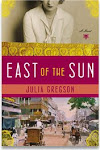 By Carlyn Beccia (Guest Blogger)
By Carlyn Beccia (Guest Blogger)
What does Marie Antoinette's infamous pouf and the starchy tuberous crop fruit known as the potato have in common? Read more to find out...
We tend to associate the potato more with Ireland and England than we do with France and that may because the humble spud had a very rocky start with French Parisians. Although already widely accepted in England, the potato did not come to France until around 1600.1 Still, no respectable royal would dare to eat the strange, dirty, lumpy looking spud. The potato became so feared that in 1619 it was banned from Burgundy, France because it was rumored to cause leprosy. It all made perfect sense to 16th century scholars. A potato looked like leprosy so therefore it must cause leprosy.2
The leprosy spud finally got an image makeover in the 18th century with the help from a potato propagandist and French chemist named Antoine-Auguste Parmentier. Parmentier threw some fabulous parties and invited the French upper class to taste his potato creations. At one of these parties, Parmentier gave Louis XVI a bouquet of potato flowers. Knowing his wife's proclivity for putting vegetables in her hair, Louis thoughtfully placed one delicate, purple sprig in Marie Antoinette's pouf. Thereafter, the potato may not have become a fashion accesory, but it did become the new, hot foot delicacy among the upper class.
The potato then went on to feed the French peasants and everyone loved their queen and...lived happily ever after.
Carlyn Beccia is author of The Raucous Royals and Who Put the B in the Ballyhoo? She writes about the scandals, rumors, and gossip of royalty over at The Raucous Royals.
Notes
Sources and Further Reading:
Langer L. William, "American Foods and Europe's Population Growth 1750-1850." Journal of Social History 8.2 (1975): 51-66.
Salaman N. Redcliffe, The History and Social Influence of the Potato,



































